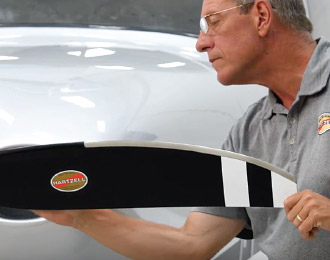
Corrosion is one of the most insidious forms of damage to aircraft and aircraft parts. Any metal object is susceptible to corrosion, but on aircraft, corrosion can be particularly serious. Left undetected and untreated, corrosion can deteriorate the structural integrity of the aircraft and its parts. Not only is corrosion-induced damage expensive to repair, but it can lead to major safety risks and even make an aircraft unairworthy in a matter of years.
Corrosion is a natural phenomenon. It refers to the gradual destruction of a metal material caused by chemical or electrochemical reactions to its surrounding environment. Put simply, corrosion is nature’s way of returning metal back to its original state.
Because of the frequency at which corrosion affects aircraft, it’s essential for aircraft owners to know how to spot corrosion and understand what can be done to prevent and slow the rate of corrosion. In this series, we’ll discuss the types of aircraft corrosion, and share information on how to identify, treat, and prevent it. First, let’s take a look at some of the common types of corrosion seen in aircraft.
Uniform Surface Corrosion
Surface corrosion is the most common type of corrosion affecting metal airframes. It first appears as a general dulling of an exposed metal surface. Uniform corrosion takes place at an even rate, causing the entire area of a metal surface to become rough and “frosted” in appearance. It is caused when the aluminum is directly exposed to oxygen in the air, which can happen when the aircraft’s paint is stripped away as a result of wear and tear, chemical or acidic fumes, high humidity or pollutants.
Pitting corrosion
Pitting corrosion may occur in any metal, but it particularly affects aluminum and magnesium alloys. An early sign of pitting corrosion is the appearance of a powdery white or gray substance on the metal surface. When you brush away the substance, you will see small cavities in the metal surface. In metal aircraft propellers, pitting corrosion is a very serious problem. Pits are often caused by trapped moisture and they can grow on the surface of the propeller blade or underneath improperly installed de-ice boots. Even if pitting seems minor, it could still cause significant damage to the propeller blade. Any sign of pitting should be addressed quickly by a professional to save the prop, if possible.
Intergranular Corrosion
Intergranular corrosion refers to corrosion that attacks along the grain boundaries of an aluminum alloy or stainless steel. It often results from a lack of uniformity in the alloy structure during the material’s manufacturing. Intergranular corrosion can be difficult to detect. It is often only noticeable once it has progressed to exfoliation corrosion, which is identifiable by the lifting or flaking of the metal at the surface. When corrosion has reached this stage, it’s usually too late to save the piece of metal affected.
Stress Corrosion/Cracking
Stress corrosion affects highly stressed metal components of the aircraft, such as the landing gear or engine crankshafts. The risk of stress corrosion increases with the age of the aircraft and exposure to corrosive environments. One side effect of stress corrosion is cracking, which can accelerate the degradation of the metal material.
These are just a few of the many different types of corrosion that may affect aircraft surfaces and components. Keep in mind that the forms of corrosion vary with the type of metal involved, the age of the aircraft, atmospheric conditions, and the length of time that the aircraft is exposed to corrosion. For a comprehensive list of the different types of aircraft corrosion, review the FAA’s Advisory Circular number 43-4B. Stay tuned for the next part of our series on aircraft corrosion, where we’ll share tips on detecting and identifying corrosion through visual inspections.